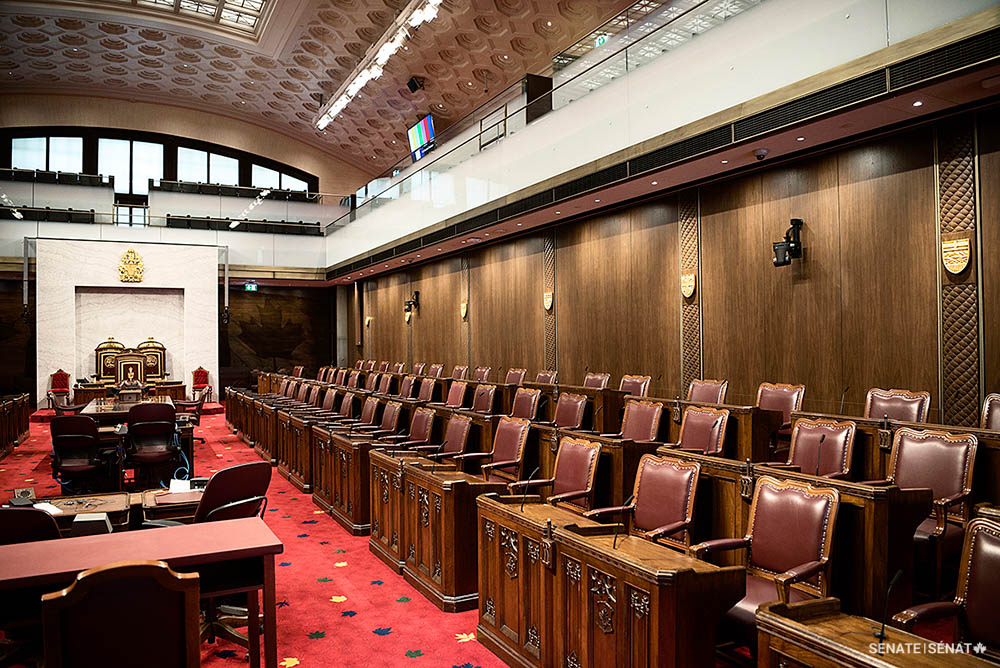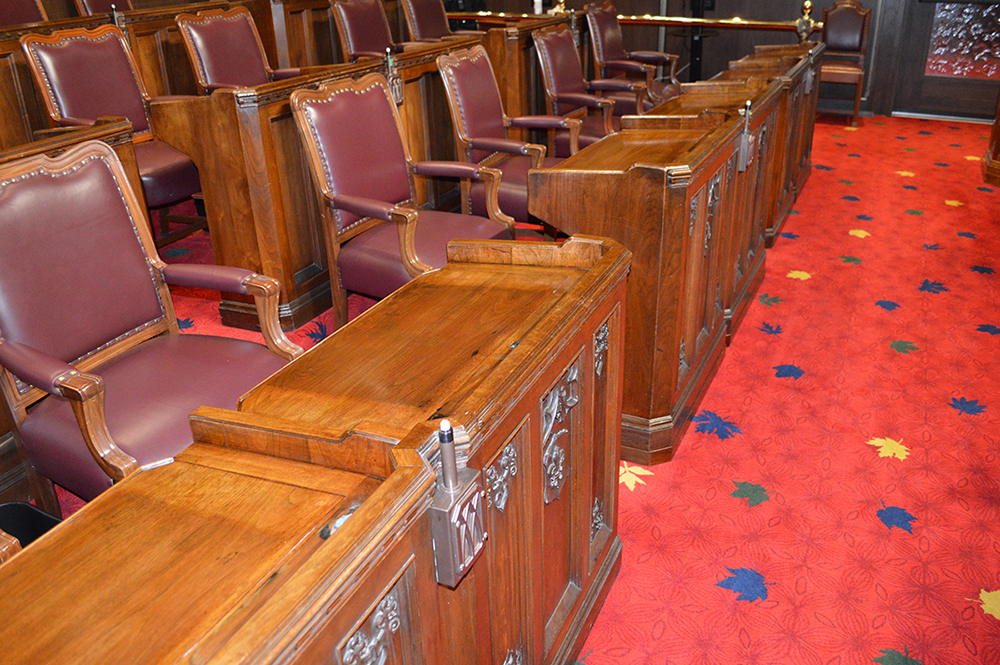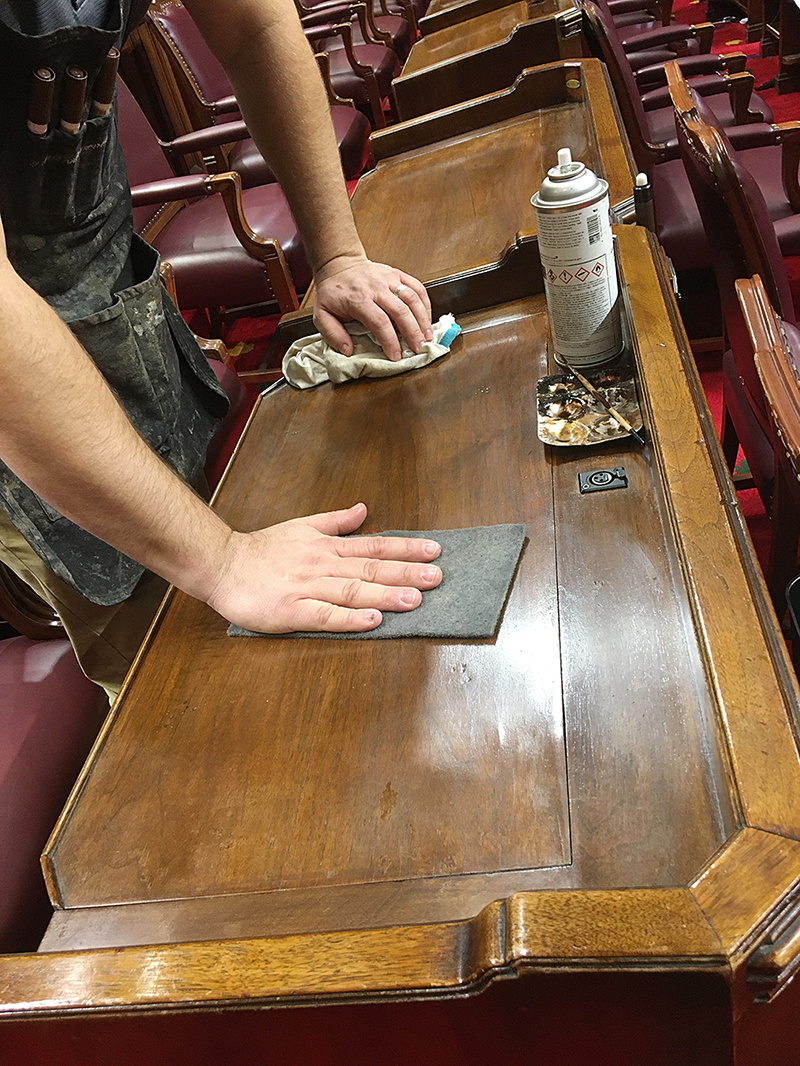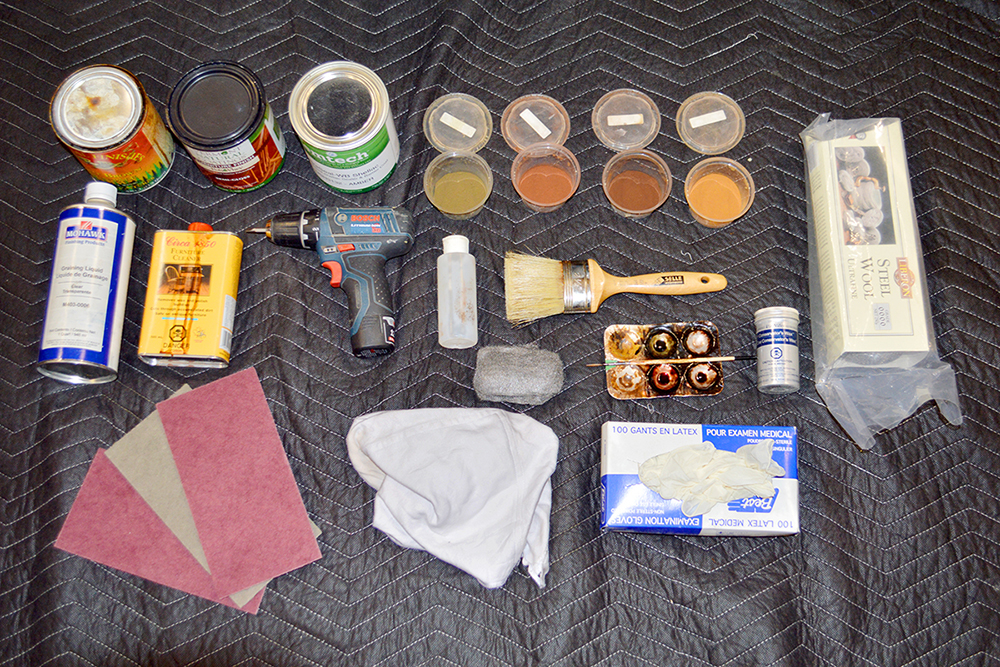Shellac, wax and lots of elbow grease help renew senators’ desks

In February 2019, the Senate moved to the Senate of Canada Building, a former train station built in 1912. The Senate will occupy this temporary location while Parliament’s Centre Block — the Senate’s permanent home — is rehabilitated.
Although Centre Block is shuttered for rehabilitation work, Canadians can still experience its art and architecture through the Senate’s immersive virtual tour.
Sure, they’re solid, no-nonsense writing desks, but they’re also irreplaceable pieces of Canadian history.
The desks in the Senate Chamber – 52 double desks and one single – are as old as Centre Block, the building they were commissioned for, and designed to be as integral a part of the structure as the carvings on its walls.
It is at these desks — now in the Senate of Canada Building — that senators take their places during Senate sittings, rising to speak and indicating “yea” or “nay” to each vote from their assigned seat. Each desk has modern upgrades, including a microphone, electrical outlets, USB ports and simultaneous interpretation.
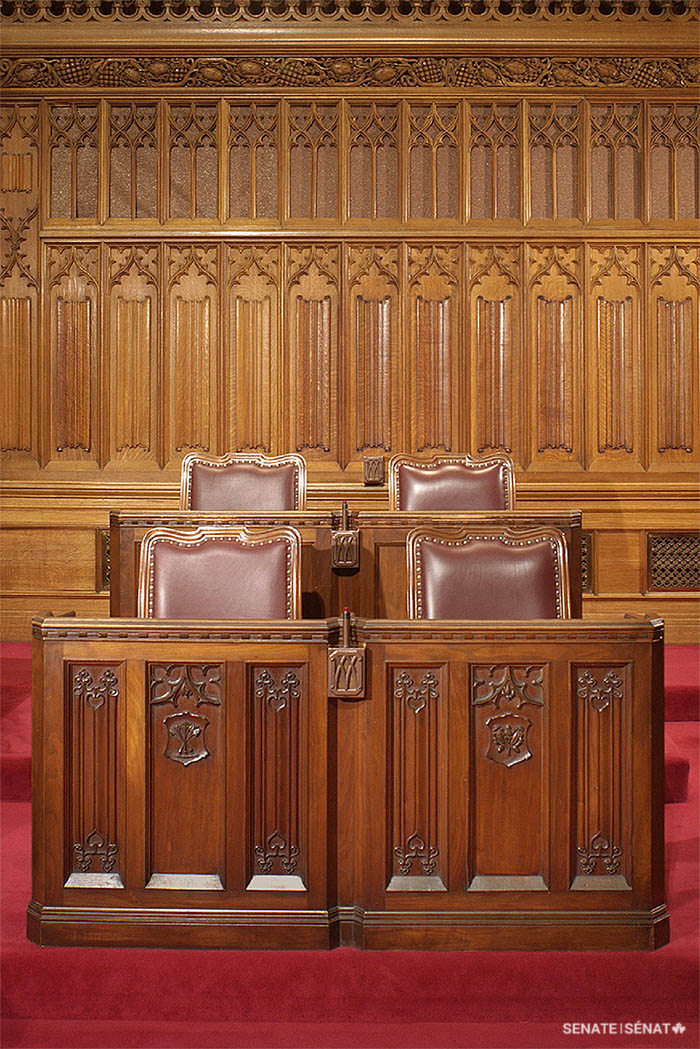
Like much of the furniture in Centre Block, the desks were designed by chief architect John A. Pearson, who was renowned for his attention to detail. Hand-crafted from walnut wood in the early 1920s by Montréal’s Bromsgrove Guild, the desks incorporate classic design elements such as beaded edging, patterned moulding and chamfered corners.
Front-row desks are particularly intricate. Designed to mirror the oak wall panelling in Centre Block’s Red Chamber, the panelled fronts are embellished with linenfold – a uniquely Gothic design that imitates the graceful curves of drapery. The desks are emblazoned with maple leaves, sheaves of wheat, fleur-de-lis, shamrocks, Tudor roses and Scottish thistles – emblems that symbolize Canada’s regions and its historical ties to France, Ireland, England and Scotland.
These botanical motifs evoke the deep roots of Canada’s parliamentary traditions and remind the Chamber’s occupants that one of the crucial roles of a senator is to represent the country’s regions.
The ornamentation marries the graceful proportioning of the Beaux Arts style, popular in the early 1900s, with Gothic Revival flourishes that channel the exuberance of medieval architecture. This fusion of design traditions, seen throughout Centre Block, is part of what makes the building so distinctive.
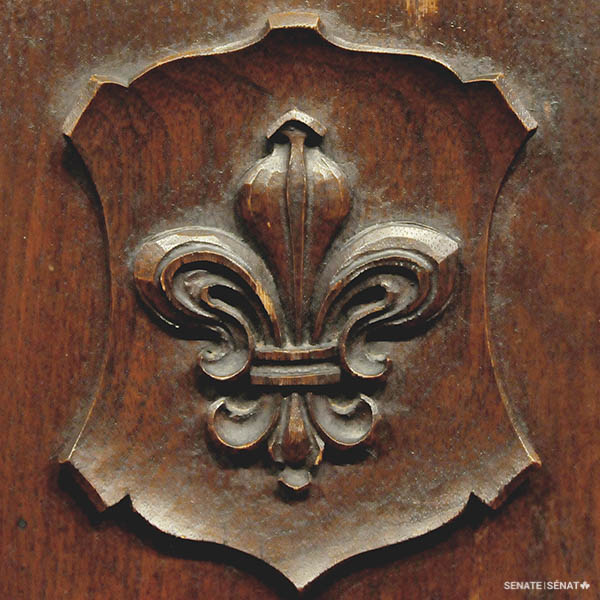
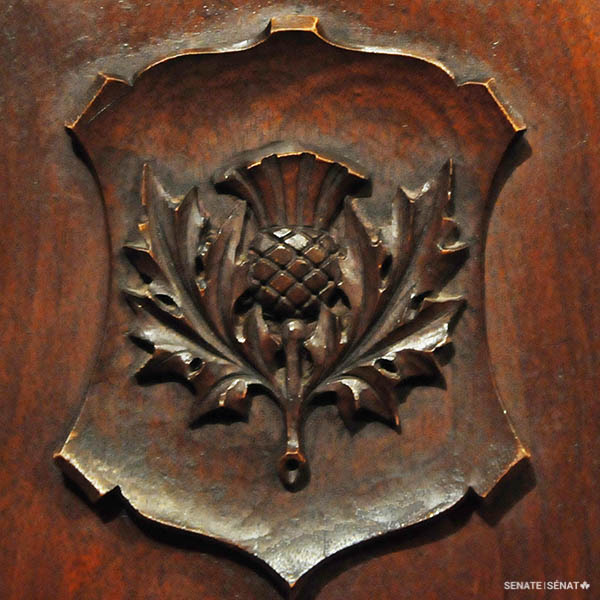
Sustaining the subtle beauty of these unassuming Senate treasures takes special expertise. That’s where furniture restoration specialist Jordan Mailhot comes in.
Mr. Mailhot, owner of Ottawa Furniture Repair, has spent hours painstakingly revitalizing and polishing these 100-year-old desks.
He understands the idiosyncrasies of heritage pieces like these. A graduate of Algonquin College’s furniture technician course, he has restored heritage pieces in Rideau Hall, home to the governor general, and Stornoway, the Leader of the Opposition’s residence.
The key to rejuvenating the desks is shellac, the natural polish they were originally finished with.
Shellac is one of the world’s oldest finishes. Derived from lac, a resin secreted by insects native to India and Southeast Asia, it was used there as a furniture polish for thousands of years before arriving in the West in the 1800s. Shellac provides a rich, natural finish that enhances the grain of the wood. It’s susceptible to damage from heat, water and bright sunlight but is easily revitalized.
“Shellac is forgiving,” said Mr. Mailhot. “You can repair scuffs and water damage without having to sand and refinish like you would with an acrylic varnish.”
“We absolutely try to avoid that — whenever you strip a piece of furniture, you lose some of the original patina of the wood.”
Wax is another crucial ingredient. It’s used as filler and crack repair and provides a resilient protective finish.
But the most important item in the furniture technician’s toolkit is undoubtedly good old-fashioned elbow grease.
Mr. Mailhot painstakingly burnished layers of shellac and wax into each desktop until the original and restored finishes were indistinguishable.
It’s brute physical work with a fancy name: French polish.
“The French polish technique is labour intensive but incredibly effective,” said Mr. Mailhot. “You have to keep up a constant figure-eight wiping motion because you can burn the finish and create blemishes by applying too much shellac too suddenly.”
As the job neared completion, Mr. Mailhot made repeated trips up to the spectators’ gallery above the Chamber to survey his work; consistency is the effect he’s after.
“At each stage of the job, I stand back to assess the overall look, judging it from different angles under different lighting conditions.”
With the desks restored to their original subtle patina, the overall effect is of an impeccably maintained collection of heritage pieces that look as flawless as they did when the 14th Parliament sat in 1922.
“I’m not looking to make an eye-popping impression,” Mr. Mailhot says. “My job is to bring the desks back to their original look – it’s about exercising judgement and respect for the original craftsmanship.”
“As a professional, it’s just very satisfying to be part of preserving the building’s history in its furniture.”
